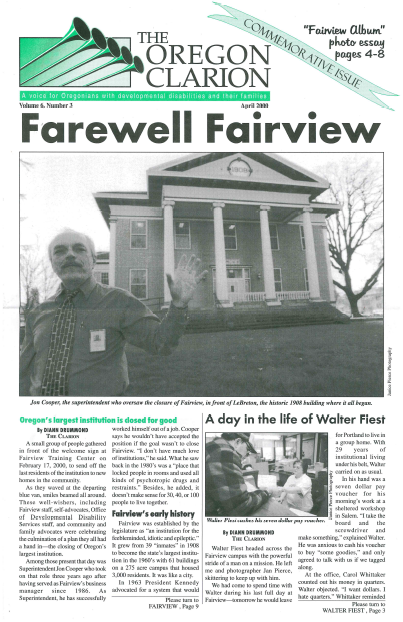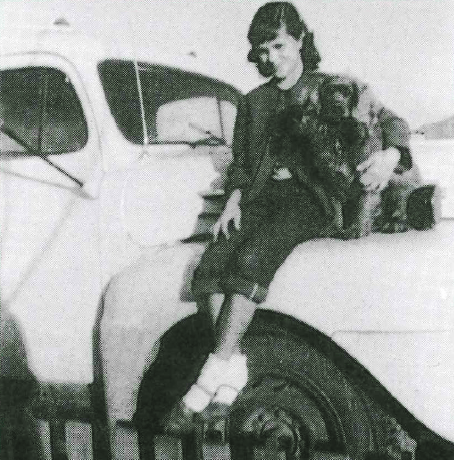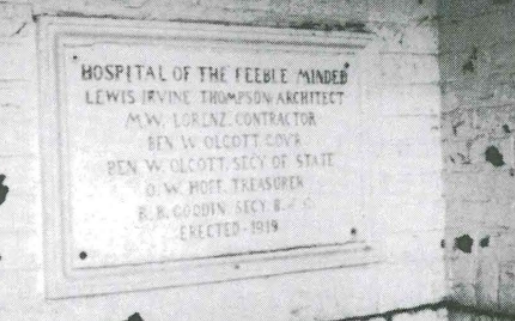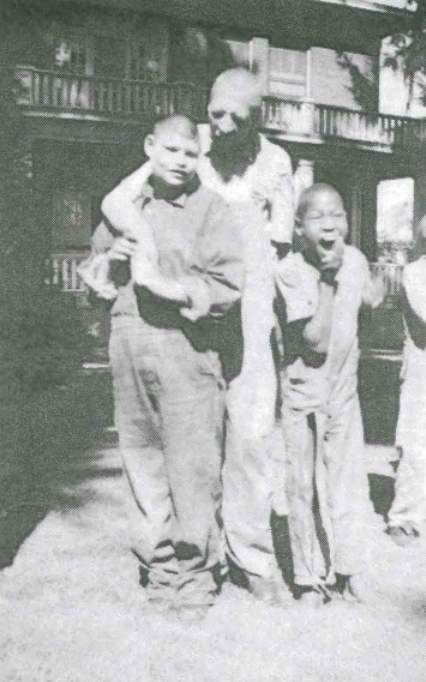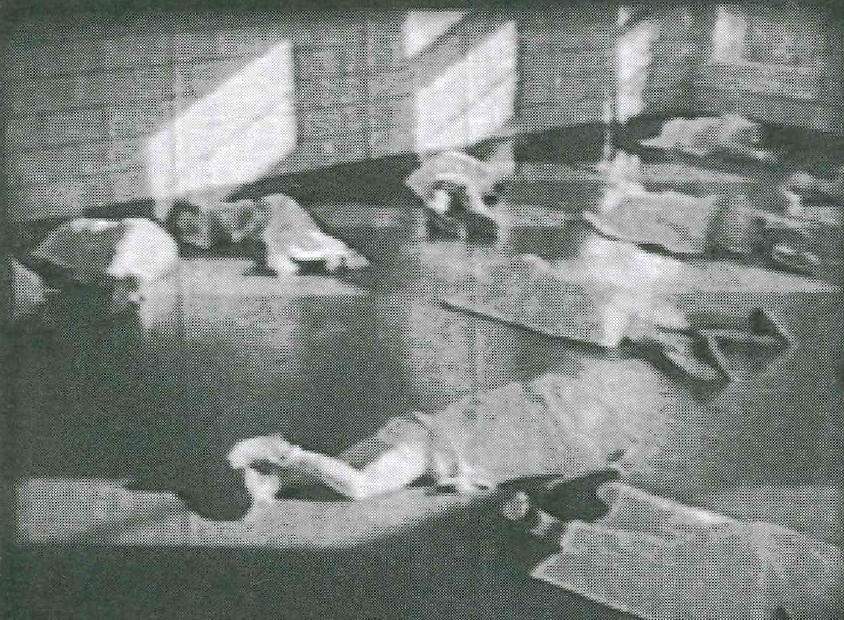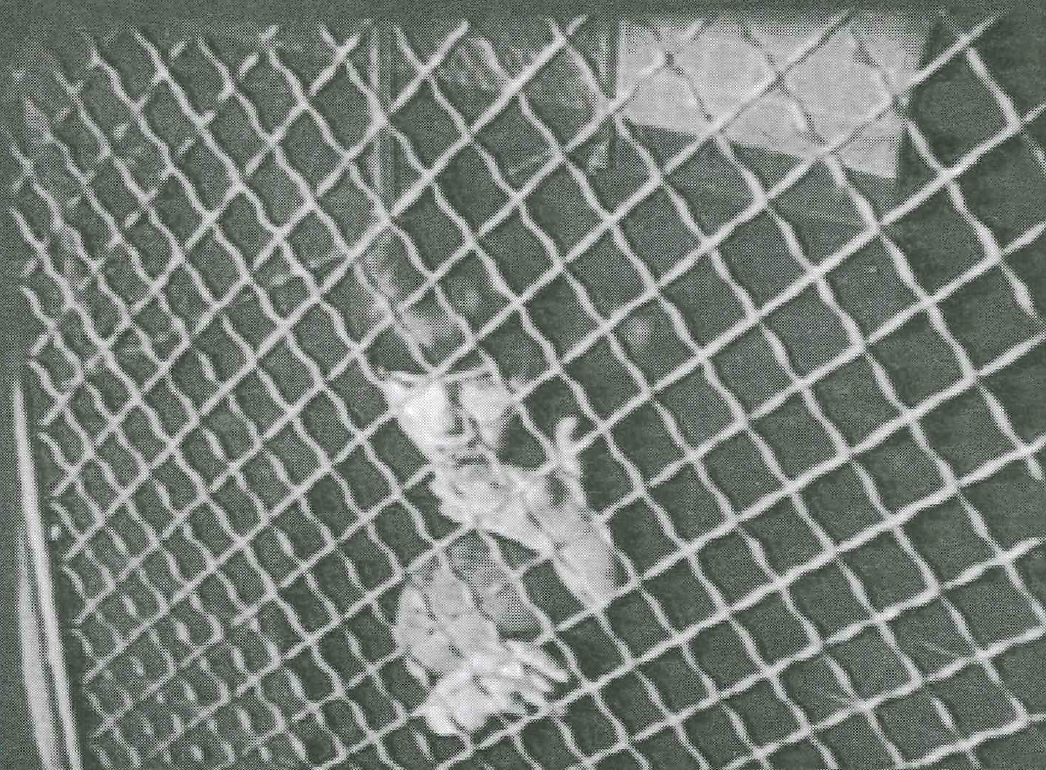The Oregon Clarion – Volume 6, Number 3
April 2000
Farewell Fairview: Oregon’s Largest Institution Closed for Good
A Long Ago Visit to Fairview Remembered
FAREWELL FAIRVIEW:
Oregon’s Largest Institution is Closed for Good
BY DIANN DRUMMOND, THE CLARION (APRIL 2000)
A small group of people gathered in front of the welcome sign at Fairview Training Center on February 17th, 2000, to send off the last residents of the institution to new homes in the community.
As they waved at the departing blue van, smiles beamed all around. These well-wishers, including Fairview staff, self-advocates, Office of Developmental Disabilities Services staff, and community and family advocates were celebrating the culmination of a plan they all had a hand in – the closing of Oregon’s largest institution.
Among those present that day was Superintendent Jon Cooper who took on that role three years ago after having served as Fairview’s business manager since 1986. As Superintendent, he has successfully worked himself out of a job. Cooper says he wouldn’t have accepted the position if the goal wasn’t to close Fairview. “I don’t have much love of institutions,” he said. What he saw back in the 1980s was a “place that locked people in rooms and used all kinds of psychotropic drugs and restraints.” Besides, he added, it doesn’t make sense for 30, 40, or 100 people to live together.
FAIRVIEW’S EARLY HISTORY
Fairview was established by the Oregon Legislature as “an institution for the feeble-minded, idiotic, and epileptic.” It grew from 39 “inmates” in 1908 to become the state’s largest institution in the 1960s with 61 buildings on a 275 acre campus that housed 3,000 residents. It was like a city.
In 1963, President Kennedy advocated for a system that would care for individuals with mental disabilities in smaller community settings. By the 1970s, reform efforts to empty institutions gained momentum throughout the country.
Oregon followed suit, and the now renamed Fairview Training Center population dropped to 2,000 as individuals moved into the community. Cooper says the goal during this period was for individuals to become self-sufficient, develop vocational skills, and moved into community homes. Staff ratios were one staff person to 41 residents, and locked time-out rooms, restraints, and drugs were frequently used.
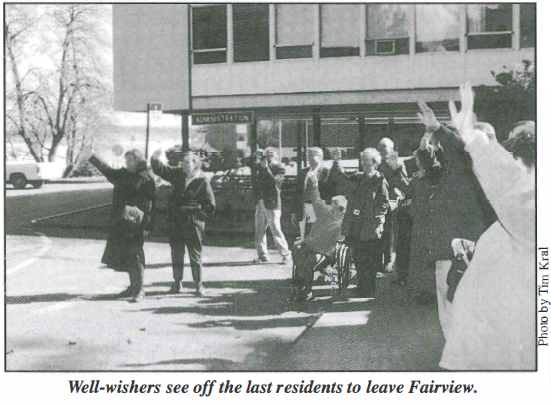
THE BEGINNING OF THE END
Even with the focus on training, independence, and community placement, Fairview ran afoul of the law in 1986. A lawsuit filed by the Oregon Advocacy Center (OAC) [now Disability Rights Oregon] on behalf of the Arc of Oregon, along with another lawsuit filed by the Department of Justice, alleged civil rights violations and failure of Fairview to protect residents from harm.
As the legal wrangling waged on, the Health Care Financing Administration found deplorable conditions at Fairview and decertified the institution in 1987, cutting off Medicaid funding for 14 weeks. The state had to make up $7 million dollars in lost funding.
By 1989, fearing the further loss of Medicaid funds and expensive legal costs, the state agreed to hire additional staff and upgrade facilities to improve the care and safety of residents. As estimated $30 million of state funds were spent on improvements. State officials also agreed to downsize the institution.
James Cronin, a longtime Fairview employee who stayed on to the end as a building manager, remembers that time well. He takes strong issue with the bad rap that employees got. According to Cronin, the residents were like family to many of the staff who performed challenging work for modest pay. Cronin remembers, “In the heat of the federal reaction, there were a lot of people who had a hard time saying they even worked here.”
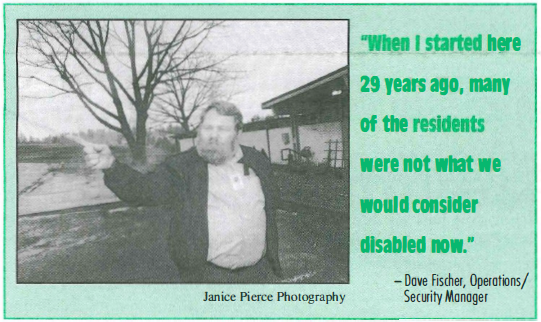
LEGAL DIFFICULTIES BRING A MAJOR SHIFT OF PHILOSOPHY
Under the cloud of criticism from federal regulators and advocacy groups, the administration launched a major campaign to treat people with more dignity and respect. Staff were taught to avoid power struggles with clients and to shift their roles from guards to caregivers. According to Cooper, “Some employees left, and a lot made that cultural change.”
Sue Coffey, a staff member who spent over 27 years at Fairview recalled, “At first, given the clients’ behaviors, it was hard for staff to see how things could be done any other way.” She said power struggles would frequently be over a second cup of coffee or a piece of bread.
Cooper says the shift yielded dramatic improvements for residents. Before the last residents left, he checked the log books from the 1970s. “A number of these people were in all kinds of restraints and on a lot of drugs,” he said. Now they are able to integrate successfully into the community with the proper supports and the use of psychotropic drugs has drastically reduced.
Even after massive resources were infused into Fairview, the legal travails were not over. In 1994, eleven Fairview employees were indicted on charges of abusing residents. The story received close scrutiny by the Clarion through the summer of 1995.
Because of the age of the cases, the inability to get testimony from the victims, and the reluctance of staff to make allegations about co-workers, few of the accusations could be proved. By August of 1995, the state had guilty charges on nine out of 82 counts (with three trials still pending at that time.)
However, the public allegations did result in some positive changes. Procedures around reporting abuse were changed so that the “code of silence” among employees was broken. Also, pre-employment drug screening was instituted with a zero-tolerance policy for drugs on campus.
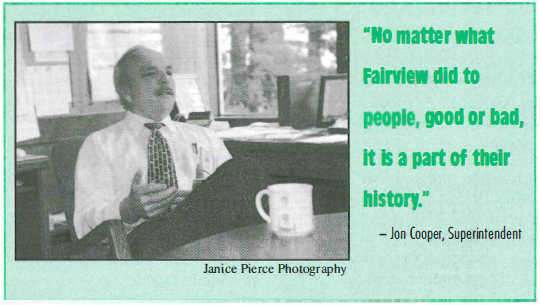
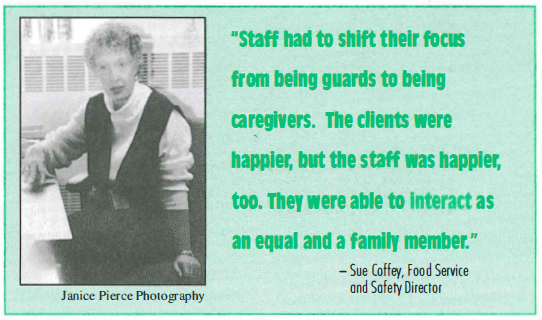
HIGH COSTS RING FINAL DEATH KNELL FOR FAIRVIEW
As Fairview downsized from 1,500 residents in 1986 to 300 residents in 1996, costs soared to nearly $200,000 per year.
The resources poured into the institution took a big bite out of the state Developmental Disability budget: thirty percent of the total dollars went to serve three percent of the population who resided at Fairview. Meanwhile, the waitlist of individuals receiving no services grew to over 3,000 and their demand for services grew louder.
Finally, in July 1996, the state unveiled the Long Range Plan for Developmental Disability Services, which included a plan to close Fairview and move the remaining residents into community placements.
While advocates had for years called for the elimination of dehumanizing institutions, it was the financial realities that finally convinced the legislature to fund the plan. James Toews, Assistant Administrator for the Office of Developmental Disability Services, acknowledged, “A significant portion of the plan is driven by cost.”
The plan projected that millions of dollars in savings could be redirected to pressing needs in the community service system. Monies would go to a wage increase for direct care staff to reduce a horrendous turnover rate, new community services for those on the wait list, and regional back-up services to handle crises and diversion. But it was clear the money would not be enough to expand the 24-hour care system.
Despite resistance by the Fairview Parent’s Association and the employees’ union, the Long Range Plan was adopted by the legislature in 1997, and the institution’s fate was sealed – it was to close by July 2000.
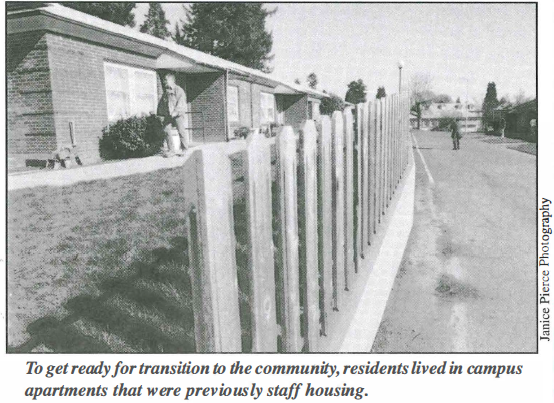
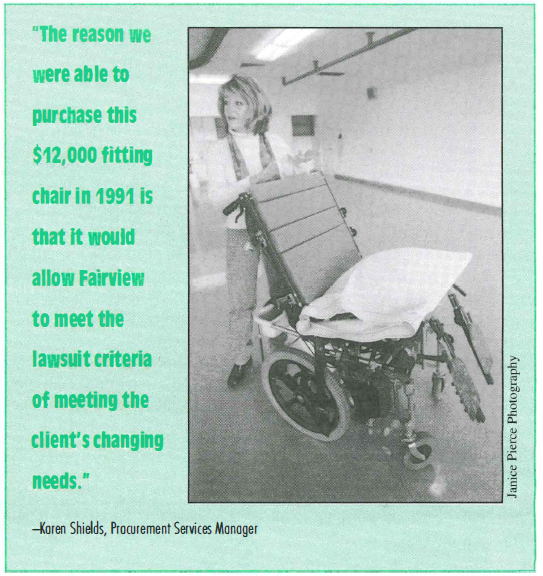
THE FINAL DAYS
With the adoption of the plan, Fairview went into full gear to get the remaining residents ready to transition into the community. The insititution also had to deal with dispaced employees and button up the facilities.
The process was carefully planned and executed. “We had the resources to do it the right way,” says Cooper.
For residents, the first step was to set up living situations on campus that were as close as possible to how things were going to be when they moved, including staff and housemates. A trial visit lasting one day to one week in the person’s home helped smooth the transition. Each resident had a person-centered plan to guide services in the community.
Many employees, with a comprehensive assistance program from the state, moved with residents to become care providers in the community settings. Others retired or found new positions within the state system or other new jobs. According to Cooper, “The Governor’s office and the Department of Human Services have been really supportive in this process. That has given employees a sense of security that they wouldn’t have had otherwise.”
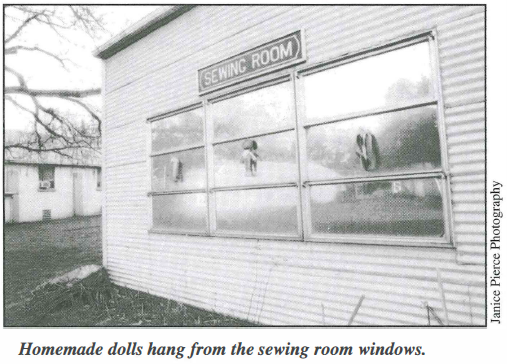
SOME THINGS ABOUT FAIRVIEW WILL BE MISSED
Two of the last residents out, Walter Fiest and his roommate, said without hesitation that they will miss about Fairview is their friends (see Walter’s story.)
Special events were loved by residents. Everyone came to the Friday night dances. A Fourth of July parade and fireworks was a popular community event in Salem. And practically the entire city of Canby came to the Fairview campus at Christmas time to celebrate with the residents.
The critical mass at Fairview made possible some the highly specialized services for residents that may be hard to find in the community.
The institution had an expensive “fitting chair” with multiple hydraulics. After it was adjusted to perfectly fit an individual, a cast was made and turned into a foam back for the person’s wheelchair.
The campus had a brace shop, a hospital, and hydro tubs. “There was nothing our physical and occupational therapists couldn’t do with adaptive equipment,” says Karen Shields. “Is that level of quality services going to be provided in the community?”
The dental department did a substantial amount of general anesthetic dental work – also difficult to find in the community.
But Walter and his housemate hit the nail on the head. It’s probably the relationships people will miss the most. “Fairview, because of its isolation and low turnover of staff and residents, created a sense of family… there was a level of acceptance here that we haven’t gotten to yet in the community,” says Cooper. Sue Coffey agrees. “I’ve spent over half my life here and watched many of our clients grow up – it’s like losing a member of your family,” she says.
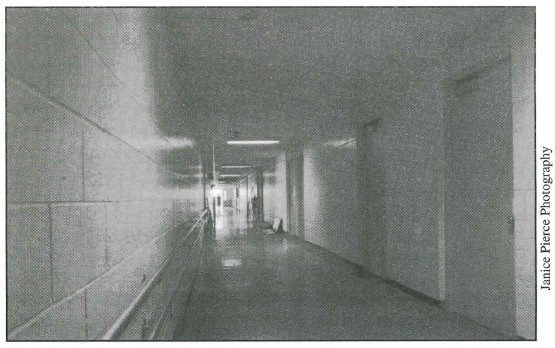
WHAT LIES AHEAD?
With the last residents gone and the staff down to a skeleton crew to keep the buildings heated and secure, a ghostly calm has settled over the once-bustling campus. Dave Fischer, an employee of 29 years who was most recently in charge of security, says “it’s eerie – we do building checks on them every day.”
Homemade dolls twist in the wind on the windows of the Sewing Room. A lone mannequin is sprawled in a wheelchair in a cavernous room that was once filled with adaptive equipment and a shop.
And what will happen to Fairview? Eventually the property will be sold to development, but nobody expects that to happen quickly. The community has been providing input into the planning process, and Cooper wants to see some of the historic buildings preserved, especially Le Breton.
But a more important question begs to be answered. How will former Fairview residents fare in the community? An initial report has already surfaced in the media of an alleged increase in deaths due to neglect in community residential programs. How can we assure that individuals with developmental disabilities are not only safe in community homes, but have good quality lives there as well? The institution is closed, but the story is far from over for the many people who lived and worked there.
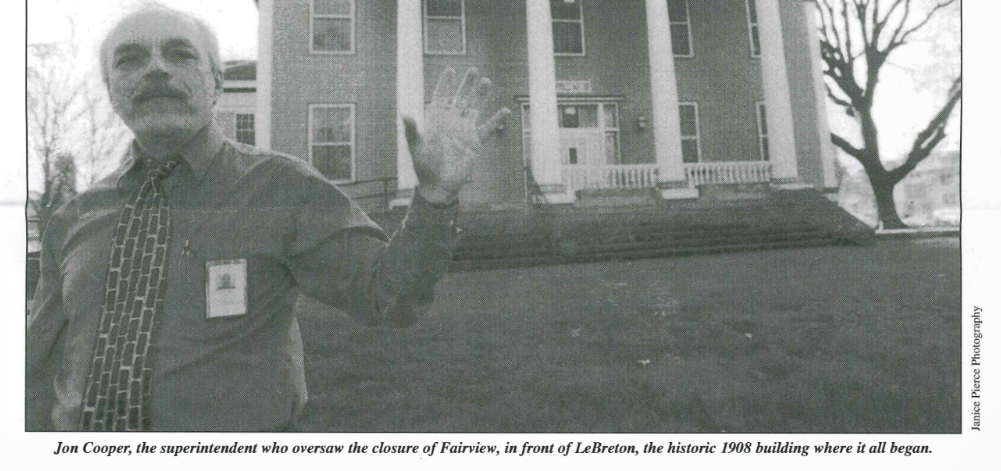
A Long Ago Visit to Fairview Remembered
BY DIANN DRUMMOND
(APRIL 2000)
About 29 years ago, as close as I can recall, a school bus full of students rolled down the I-5 freeway from Portland to Salem. These were white suburban students, baby boomers living the post-war dream.
Most lived in ranch-style homes, had one family car, and moms that stayed home and baked cookies while dad earned the family income. There wasn’t much diversity.
Their parents wanted them to go to college, and they desperately wanted to be popular in school – pretty much the same as today. The high school had one black student, and he was admired by everyone for his significant athletic talent. Most students didn’t know much else about him.
I was on that bus in 1961, a high school freshman who had never seen a person with disabilities in my life, and I was on my way to visit Fairview.
That experience is one I will never forget and yet, my memories are hazy. Why did we go there? I don’t know the answer to that specifically, but I have the impression that someone thought it would be a good idea to open our eyes to the sight of these “unfortunates”.
The tour itself is a blur of impressions, a mixture of morbid curiosity and horror. We saw kids with huge heads and bent bodies. We saw kids in a bare room rocking back and forth moaning. In retrospect, it seemed like one of those sideshow carnivals where people crowd in to see various freaks of nature.
I have always felt uncomfortable about that visit – a feeling almost of wrongdoing that I had participated in viewing human beings as if they were strange creatures in a zoo.
Now many years later, I have a daughter living with me who is much like many of those individuals we saw that day at Fairview, and I now known why the experience was so discomforting. We had no opportunity to experience the Fairview residents as people – we were look at them, not into them.
And at a very basic level I realized something else – these people had no families to take care of them. One of my fears during even later adolescence was the idea of losing a parent. When they were late coming home I was sick with worry, imagining their mangled bodies in a wrecked car.
I suppose I figured the kids I saw there must not know the difference somehow – maybe they were so disabled that they didn’t need the love and nurturing of a family? What a soothing delusion.
All of this roiled around in my head as I visited Fairview in its closing days to write our feature story. As Dave Fischer, a 29-year employee, drove us around the rainy and now-desolate campus, I told him that I had toured Fairview when I was in school. “We had an awful lot of high school tours,” he said. His voice had an edge to it. He explained that he and his wife lived on campus and made a point to be gone on tour days.
“I feel like they were just putting them on display.” I was glad he shared that with me.
Fairview has closed. There will be no more tours.
– DIANN DRUMMOND
Fairview Album
In this expanded issue of The Clarion, we wanted to contribute to the preservation of Fairview history, something we believe is vitally important. Trusting in the adage that “pictures speak louder than words,” we sought out photographs that would give a faithful glimpse of institutional life from years ago. We were greatly aided in our search by Jon Cooper, the last superintendent of Fairview, who directed us to a tattered photo album he had stored in his office amongst a pile of unorganized clutter that would eventually be sorted through and shipped off to the State Archives. The album showed the happy days of Fairview: parades, picnics, holiday celebrations. We were also given access to a carousel of slides that documented the industrial side of Fairview: the farming, food service, and laundry service that were all part of the infrastructure that supported a population of thousands.
But what of the darker side of the institution – the side we know existed based on official records and first-hand reports from former residents and staff? No pictures were to be found that showed that view of the institution. In fact, we were told by Cooper that all those photos, along with paraphernalia such as restraints and time-out rooms (a euphemism for cages) were purged in the 1980s as reforms were launched in response to two lawsuits.
Ironically, we finally found documentation of the dark side Fairview in a promotional film, Oregon Fairview Home, circa 1946, produced by the State of Oregon to sing the praises of institutional life. The power of these photographs speak for themselves.
Additional photos by ace photographer Janice Pierce and excerpts from a powerful commemorative poem by Tim Kral round out this photo essay.
We Meant Well
Staking out the rolling hills far
Enough from town, we thought
To muffle our mistakes or
Make them easy to catch.
We meant well
Said they needed
Saving, theyWanted us between them
And the world; Best, we said
For all concerned.

Then: A bustling campus when the guys still wore overalls and worked on the farm. People came to the campus to perform plays and music while residents stretched out on the lawn.
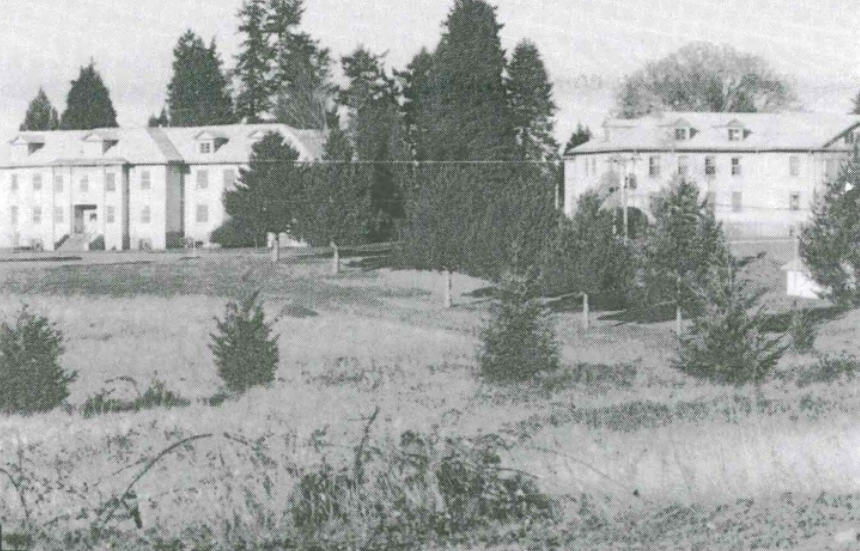
NOW: A virtual ghost town after the last residents left in February 2000.
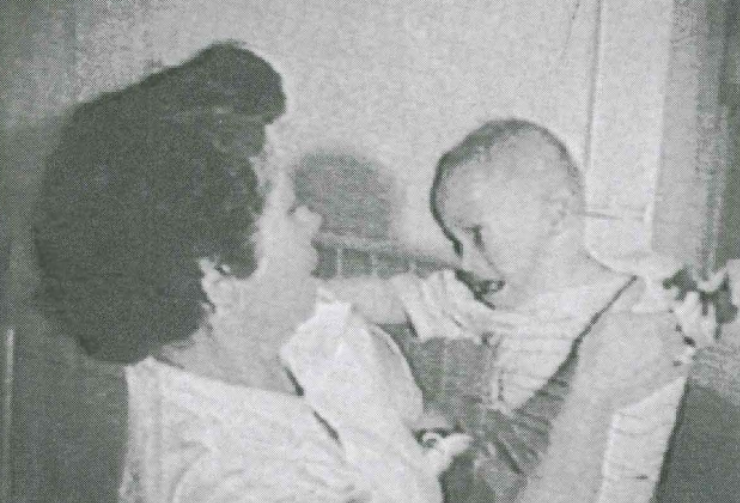
During the post-war years, the population expanded. Fairview began to serve younger and more severely disabled individuals.
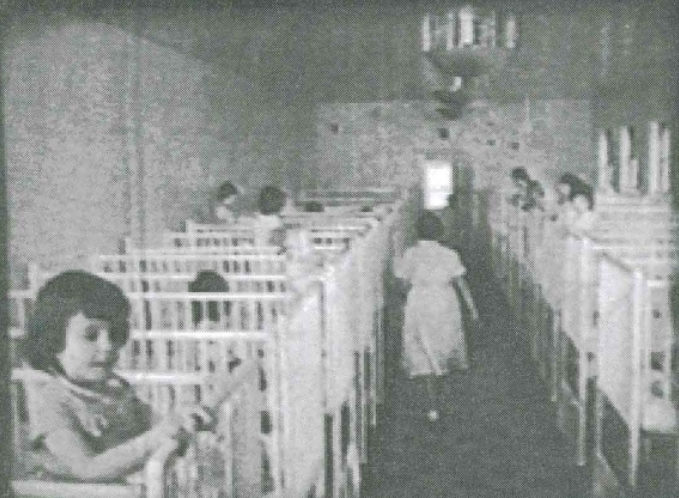
Cottages housed 60 youngsters with two staff on duty with barely enough time to feed, bathe, dress, and clothe everyone.
We Meant Well
We made do
Locks, Buzzers, Whistles, Beds
and Toilets by the Acre
One Haircut, Outfit, Meal, even One
Smell, but
Learned slowly that One Size Fit None.
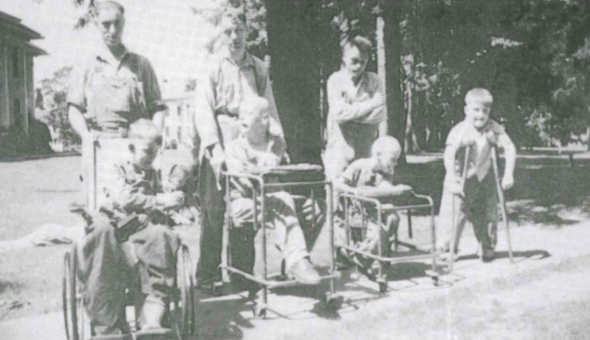
More capable residents often served as helpers to other residents.
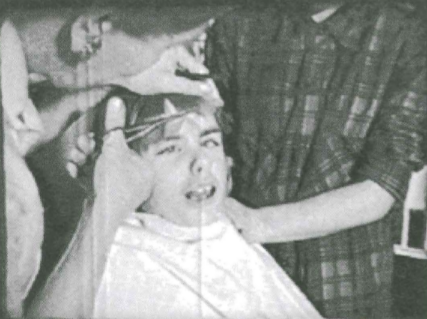
The campus had a barber and beauty shop in addition to a community center for resident activities and a Physical Rehabilitation Center.
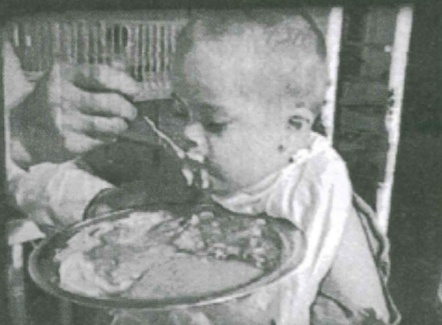
A shortage of staff made it necessary to feed residents in the shortest possible time. An “institutional mush” was shoveled in quietly with an oversized spoon. Some children inhaled the mixture resulting in life-threatening aspiration pneumonia.
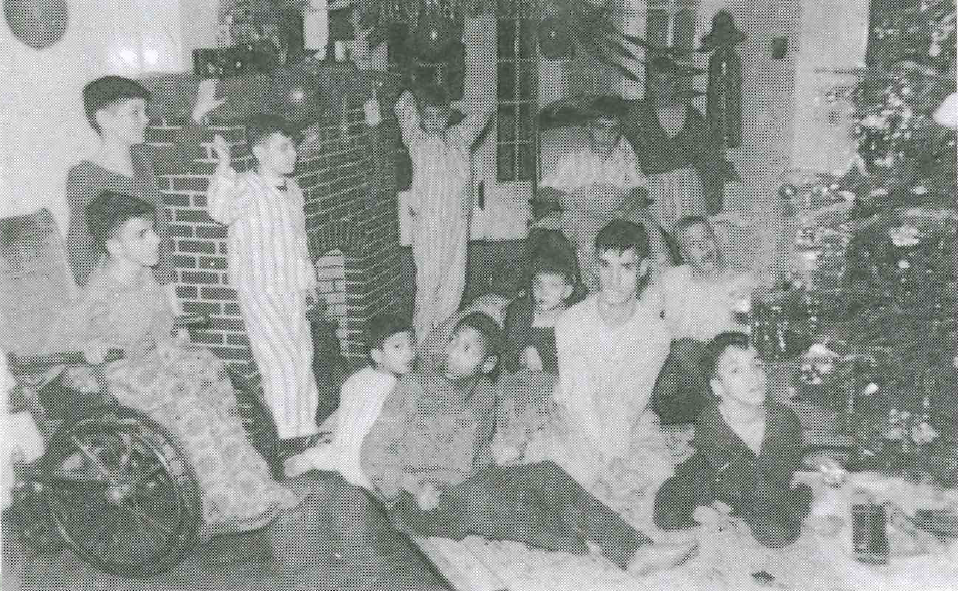
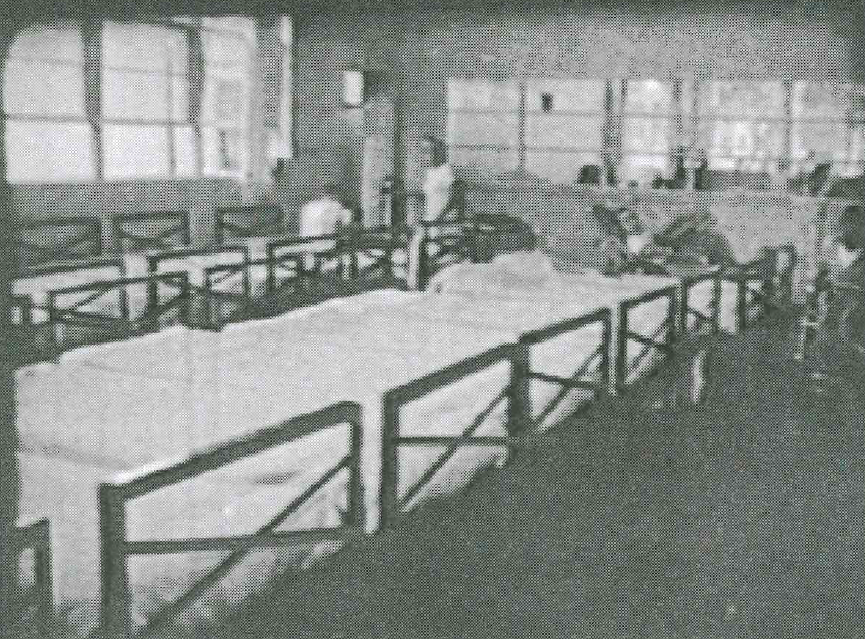
Lack of privacy is a common complaint of institutional residents.
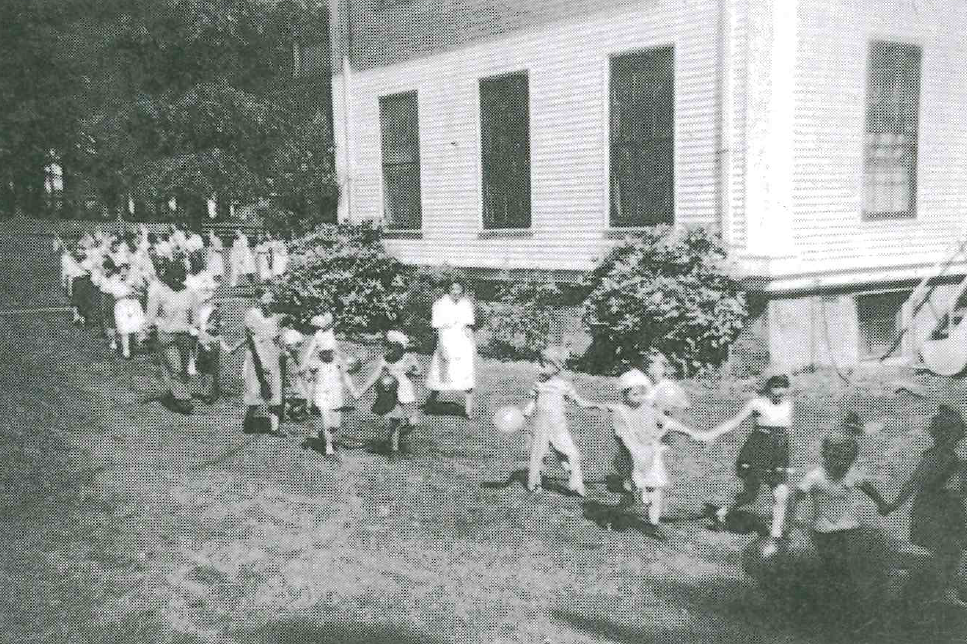
In the early days, to make sure no one got off the beaten path, staff had residents hold on to a rope. Later they held hands in pairs as seen in this picture.
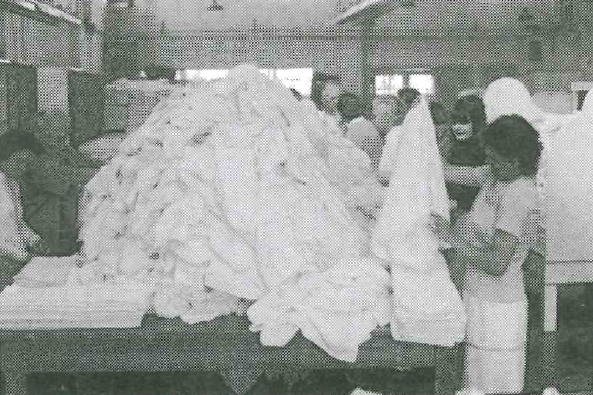
Residents helped in the laundry, in the kitchen, and on the farm to feed and supply clean clothes and bedding to residents.
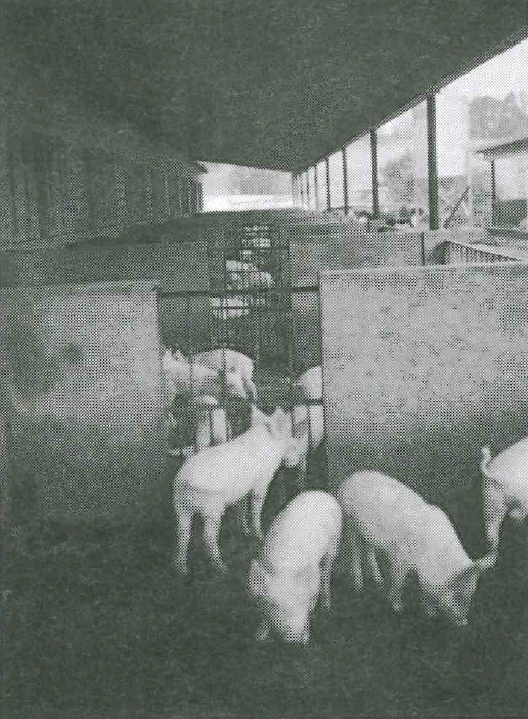
Fairview’s farm, which started before 1920, supplied much of the food for the institution. The farming ceased in 1977 because it was losing money and was no longer useful as a training program when Fairview began admitting younger and more severely disabled individuals.

The population swelled to 3,000 in the 1960s.
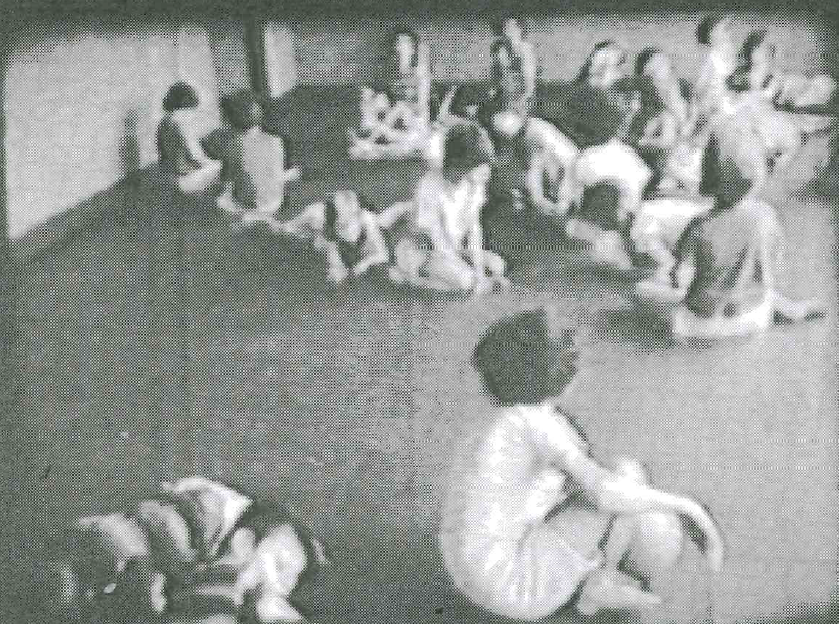
Kids spent time in a bare linoleum-tiled “playroom” and even took naps there.
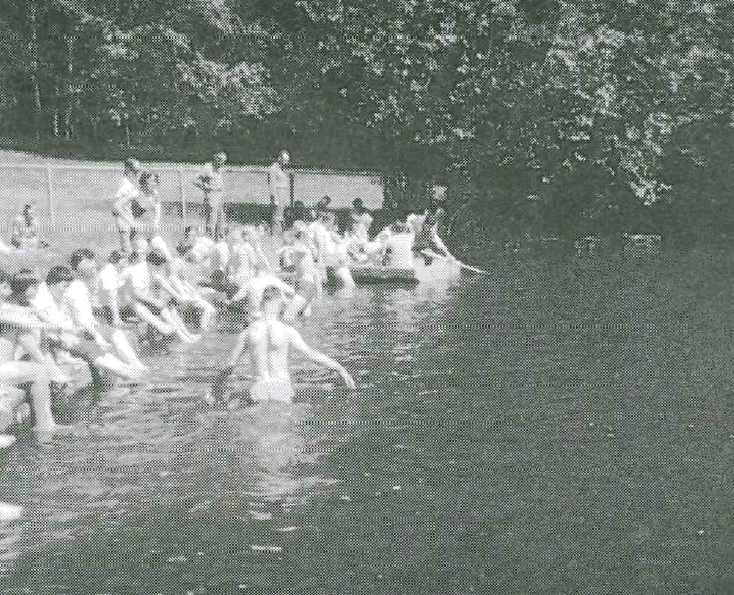
A man-made lake on the campus provided residents with swimming, boating, and fishing activities. The lake was filled in when two students drowned there in the 1970s.
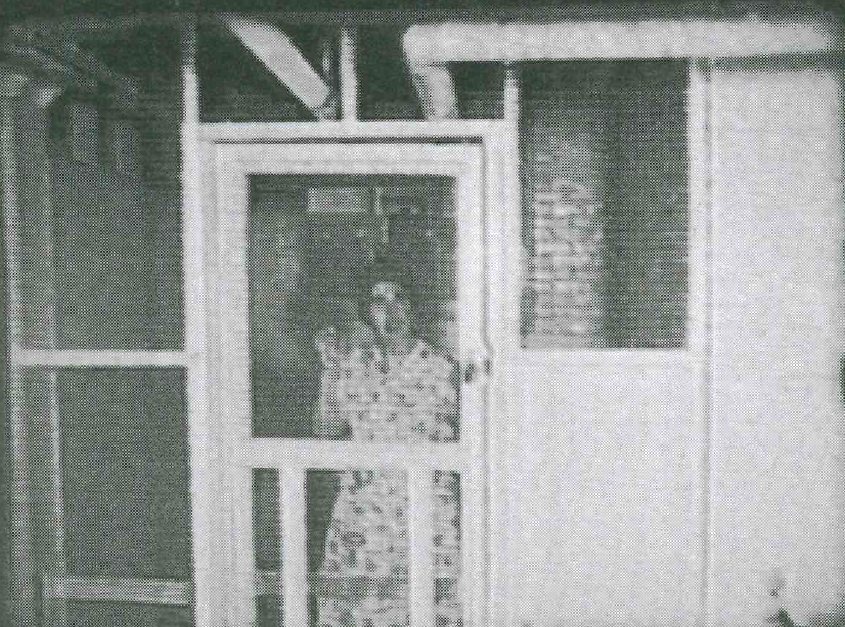
Restraints, locked time out rooms and psychotropic drugs were frequently used throughout the 1970s.
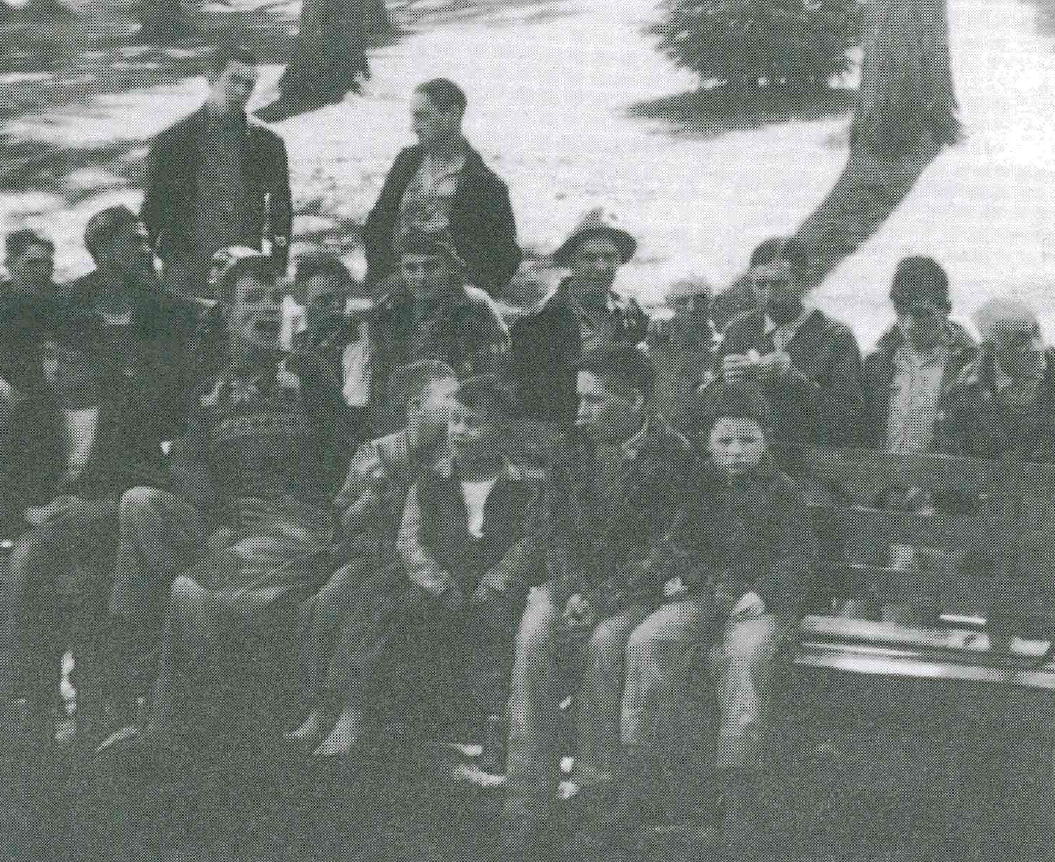
We Meant Well
Removing chains for ropes, compounds
For cages, Shackles for stiff canvas
Jackets, Cold water, Hot water, fresh
Air, menial manual labor called
Exercise for these prisoners of a war
They had not declared.
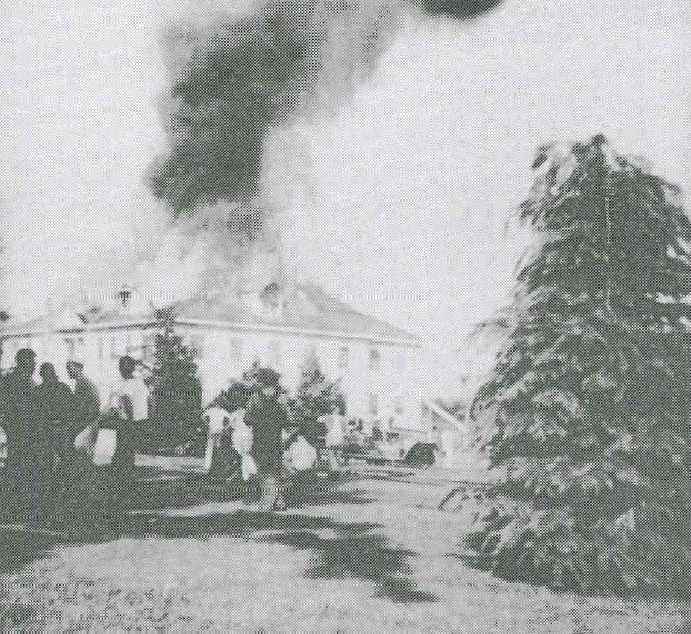
The fire brigade tries to quell the flames engulfing the hospital building. Another fire in 1969 destroyed Byrd Cottage, killing three and injuring nine because physically disabled residents were restrained in cribs too wide to fit through the door.
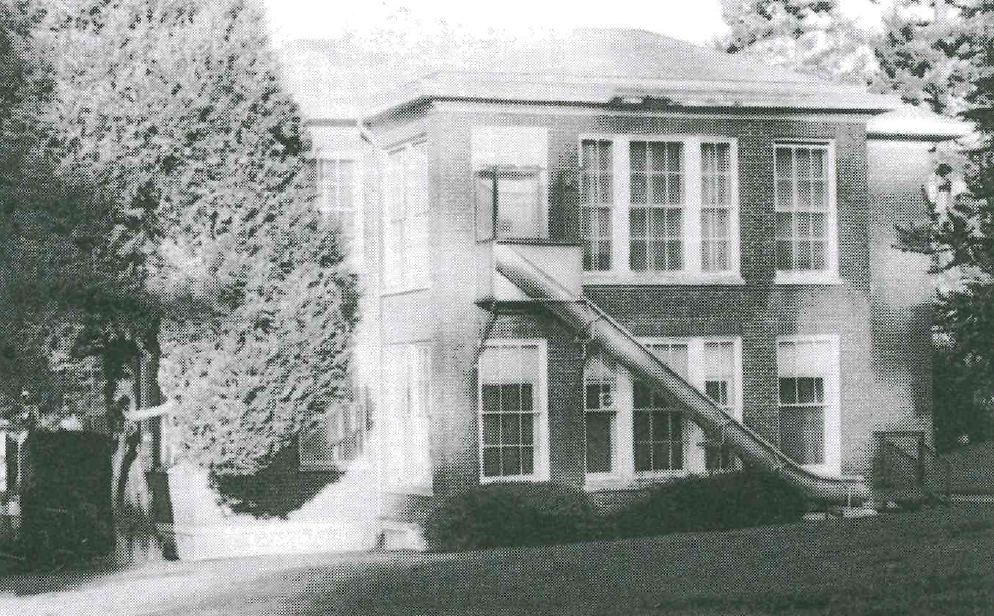
Pictured here is a chute for residents to evacuate quickly. (Janice Pierce Photography)
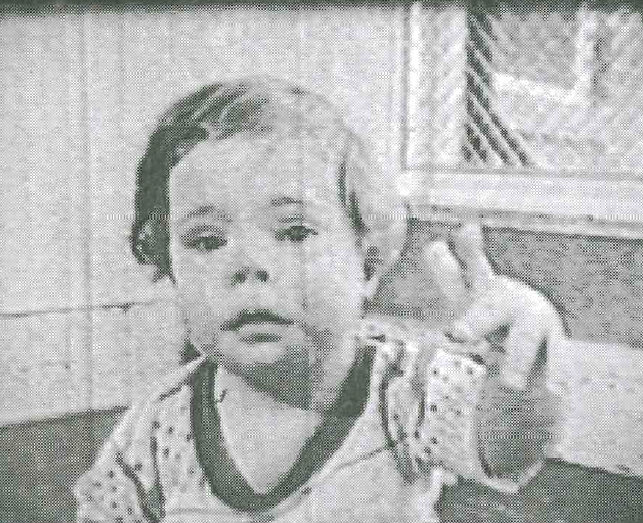
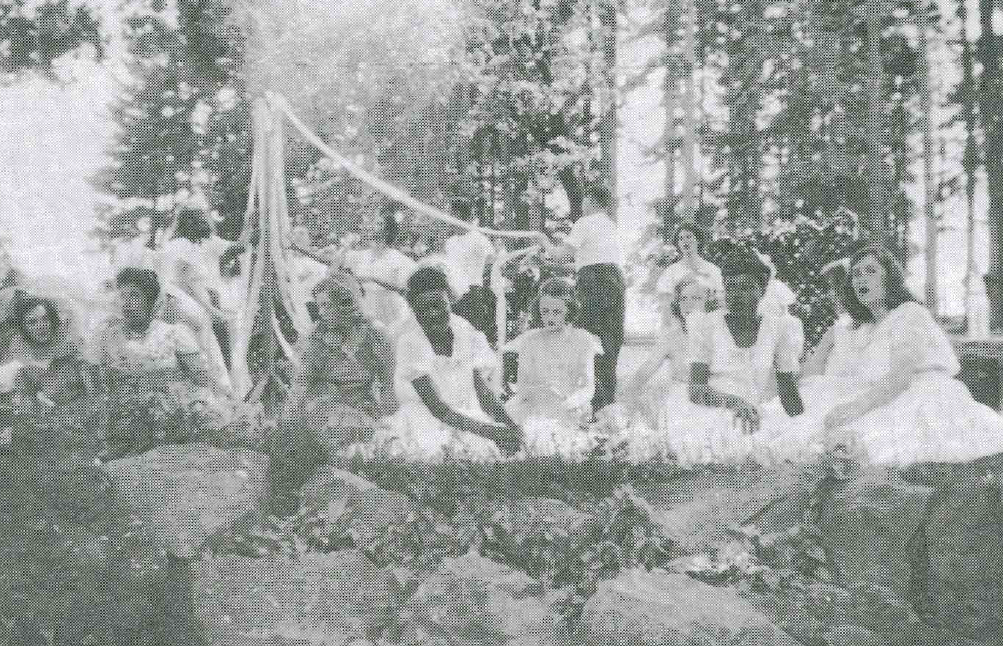
May Day Picnic
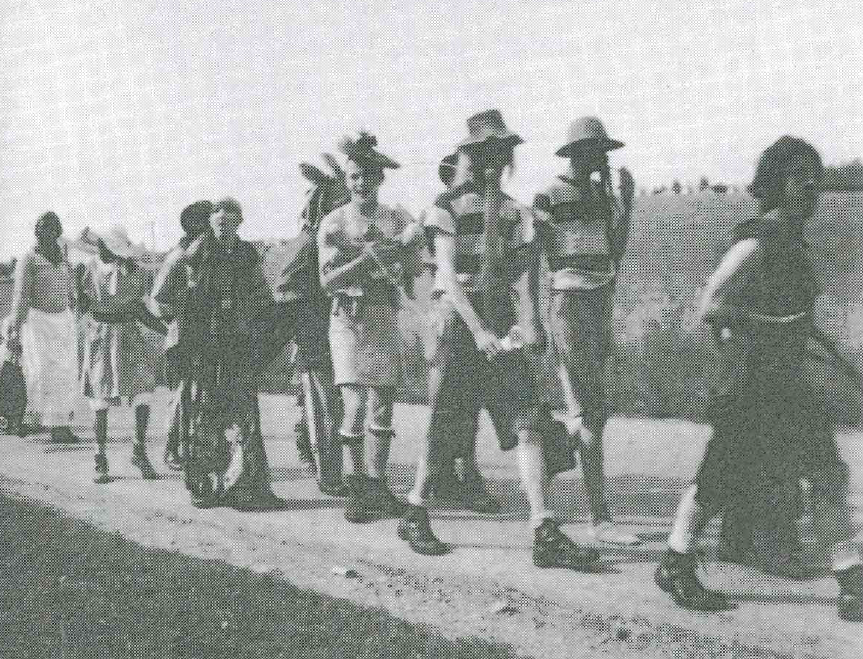
The Fourth of July Parade and Fireworks was one of the highlights of the year for Fairview residents and Salem town folks as well.
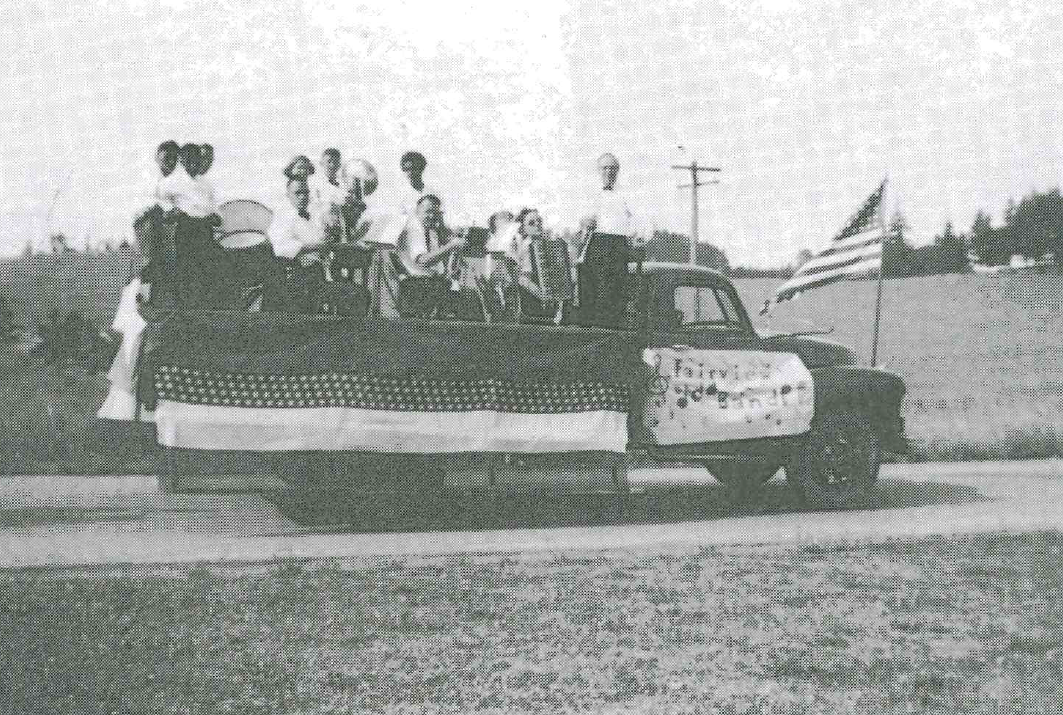
The last parade was held in July 1970. The fire truck was donated to the State Fire Marshal’s Museum when Fairview was closed.
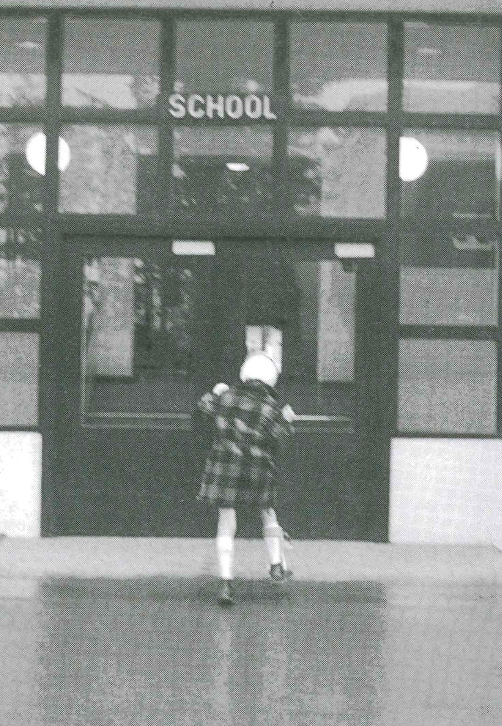
The Individuals with Disabilities Education Act (IDEA) had an impact on services at Fairview.
We Meant Well
But forgot Why, For Whom
We did What, until they
Fought us, Bit us, Fled from us, Screamed
At us enough to
Remember, We did
This for ourselves.
We meant well
Damned if they didn’t
outwit us at every turn, refusing
Docility, Tranquility, Anonynymity
All this heaven had to offer.
– Poem by Tim Kral, March 2000
Click below to flip through the entire issue of the The Oregon Clarion from April 2000. The double arrows will take the issue full screen.

